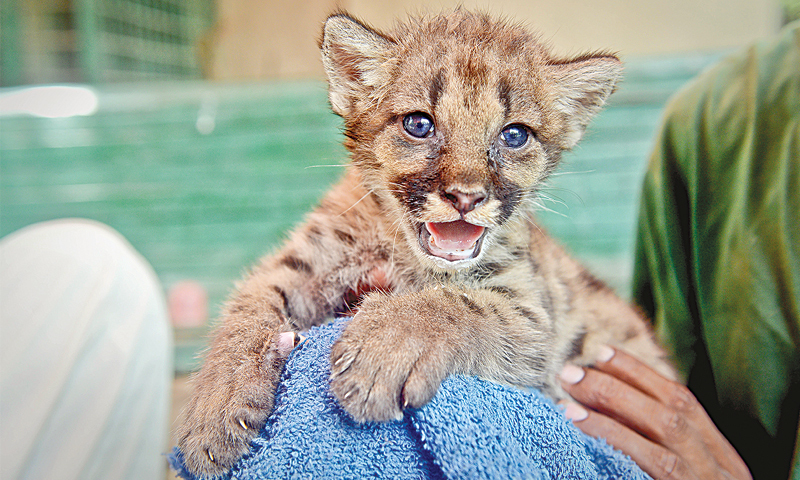After the death of its two siblings in less than a fortnight, the last surviving puma cub has become a test case for the zoo staff in Karachi that remained clueless earlier yesterday about how one of the cubs recently acquired tetanus and died.
The first death of the puma cub, however, was blamed on ‘malnutrition’.
A visit to the zoo showed that the cub’s death had greatly upset the staff now struggling to take care of the last surviving baby.
“I am extremely saddened as I was personally taking interest in their care. They were quite well over the past 10 days since we had started feeding them with powdered milk. It was sheer bad luck,” said zoo director Fahim Khan.
To a question, how the cub acquired tetanus, which usually occurs when unattended wounds come in contact with specific germs, he said: “I have no idea. The consultant who examined the cub found no injury or abrasion on its body. There is vaccination against tetanus but it is administered at 12 weeks of age.”
The surviving baby, he said, was also examined and found to be well. “We are hoping that it will survive and, if that happens, we plan to exchange it with a pair of brown bears from the Lahore zoo whose director during a recent visit has expressed willingness to exchange their animals with our zoo,” he said.
According to the zoo staff, bottle-feeding was initiated because the mother was ‘not properly nursing the babies’.
“She has very low production of milk which left the cubs hungry and they were getting weak. The mother has given multiple births and, perhaps, has gone a bit old,” zoo zoologist Abida Raees observed.
The surviving cub has not been named as yet and appeared dull while the tip of its tail had exposed skin. Upon asking, the staff claimed that “it was normal given the fact that the pumas that now have grown up also had the same exposed skin on their tails earlier”.
The staff insisted that the animal den and the cage were kept clean.
‘Soil full of germs’
Though disappointed over the puma deaths, Mr Khan took pride in what he called the ‘increasing number’ of pumas at the zoo as there had been no birth in other big cat species for many years.
“It’s the third time we had three babies of pumas after a gap of three years. Unfortunately, in all three cases, two babies died. But, you should appreciate the fact that their number is increasing despite these deaths and today we have two puma pairs; one pair of around 12 years and the other between one and two years,” he said.
Sources, however, expressed serious doubts over the survival of the remaining cub, aged a little over a month, and said that it might not be lucky as in previous cases cubs were completely being looked after by their mothers.
“Apart from having qualified technical staff in sufficient number what the zoo desperately lacks is replacement of its present soil that has become so dirty and a breeding ground for all kinds of germs.
“A few years ago, the zoo initiated the process to replace the soil of some cages, but it was left in the middle when the director was transferred,” said a retired zoo official.
According to him, soil replacement and regular use of disinfectants is a must to make newborns survive at the zoo.
“The zoo has a poor survival rate of newborns mainly because of highly compromised environment in which animals are forced to live in. It is regretting that though the zoo has seen many costly development projects not a single scheme has ever been launched to replace its soil,” he said.






